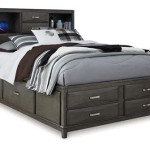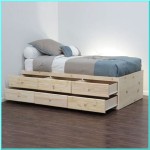Understanding Bed Sizes: Twin, Full, Queen, and King
Choosing the right bed size is a crucial decision when furnishing a bedroom. It impacts not only comfort and sleep quality but also the overall aesthetics of the room. With so many bed sizes available, it can be challenging to determine which one best suits your needs. This article provides a comprehensive guide to popular bed sizes, including twin, full, queen, and king, offering insights into their dimensions, suitability for different scenarios, and key considerations for making the right choice.
Twin-Sized Beds: Ideal for Smaller Rooms and Growing Children
The twin bed is the smallest standard bed size, measuring 39 inches wide by 75 inches long. It is often favored for children's bedrooms and guest rooms due to its compact dimensions. The limited width makes it suitable for smaller spaces, while its length provides ample room for a single individual to stretch out comfortably. Twin beds are also popular for bunk beds, offering a space-saving solution for multiple children.
Twin beds are known for their affordability and versatility. They are readily available in a wide range of styles and materials, making it easy to find one that complements any decor. However, the narrow width can be restrictive for couples or those who prefer extra space to move around in bed. If you plan to share the bed with a partner, consider upgrading to a larger size.
Full-Sized Beds: A Step Up in Space for Singles and Couples
The full-sized bed, also known as a double bed, offers a significant upgrade in space compared to a twin. It measures 54 inches wide by 75 inches long, providing ample room for a single person to sleep comfortably or for a couple who prefer a slightly more compact option. The added width allows for more space to move around and stretch out in bed.
Full beds are a popular choice for teenagers, college students, or individuals who prioritize a larger sleeping surface without sacrificing space in a smaller bedroom. They are also a viable option for guest rooms, offering a comfortable and private sleeping experience for visitors. However, for taller individuals or couples who value significant space for spreading out, a queen or king-size bed may be more suitable.
Queen-Sized Beds: The Golden Standard for Comfort and Convenience
The queen-sized bed, measuring 60 inches wide by 80 inches long, is often considered the gold standard for comfort and convenience. It offers ample space for couples to sleep comfortably, with enough room to stretch out and move around without feeling cramped. The generous width also allows for extra space to accommodate pillows, blankets, and other bedding accessories.
Queen-sized beds are a versatile option for master bedrooms, guest rooms, or even smaller apartments where space is limited. They offer a balance between comfort and practicality, providing a generous sleeping surface without taking up excessive floor space. The popularity of queen beds is evident in their widespread availability and affordability.
King-Sized Beds: Ultimate Luxury for Spacious Rooms
The king-sized bed, measuring 76 inches wide by 80 inches long, is the largest standard bed size, offering unparalleled luxury and space. It provides ample room for couples to sleep comfortably, with plenty of space to stretch, move around, and even share the bed with pets. King-sized beds are ideal for spacious bedrooms where comfort and indulgence are paramount.
King-sized beds are a popular choice for master bedrooms, creating a luxurious and relaxing retreat. They are also often favored by larger families or those who frequently have guests. The impressive dimensions of a king-sized bed create a sense of grandeur and opulence, adding to the overall ambiance of the bedroom. However, the significant footprint of a king-sized bed makes it unsuitable for smaller rooms or spaces with limited floor area.
Factors to Consider When Choosing a Bed Size
Choosing the right bed size is a personal decision based on individual needs and preferences. Here are some factors to consider:
- Room size: Consider the dimensions of your bedroom and the amount of space available for a bed. Measure the available floor area and determine if the desired bed size will fit comfortably without crowding the room.
- Personal preferences: Think about your sleeping habits, whether you prefer a narrow bed or ample space to move around, and whether you usually sleep alone or with a partner.
- Bedding needs: Factor in your bedding preferences, including the thickness of duvets and comforters, the number of pillows you use, and whether you prefer a fitted sheet or a flat sheet.
- Budget: Be mindful of your budget, as bed sizes can range in price. Larger beds tend to be more expensive due to the increased amount of materials used.
- Lifestyle: Consider your lifestyle and the frequency of overnight guests. If you often have visitors, a larger bed size may be more comfortable for everyone.

Mattress Sizes Chart And Bed Dimensions Guide Amerisleep

Mattress Sizes And Dimensions Guide Clarity

The Ultimate Mattress Size Chart And Bed Dimensions Guide Sleep Advisor

Bed Comparison Chart This Comes In Handy When Trying To Get Some Sheets Made Awww Yeah Mattress Size Bedroom Diy

Mattress Size Chart Bed Dimensions 2024 Guide U S News

Twin Bed Size Dimensions Mattress Guide Nectar Sleep

Mattress Sizes 101 Finding Your Perfect Fit
Mattress Size Chart And Bed Dimensions Guide 2024

Decoding Mattress Sizes And Dimensions Ncoa Org

Choosing The Right Mattress Imperial Furniture
Related Posts







